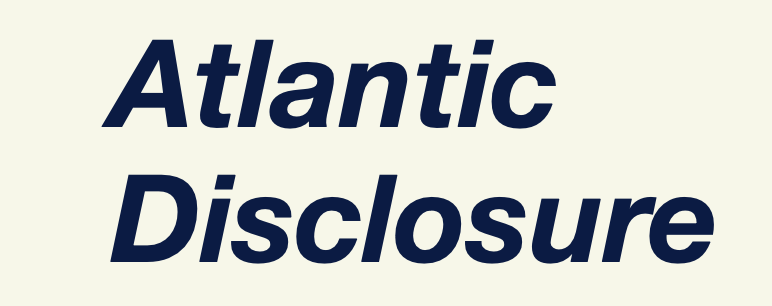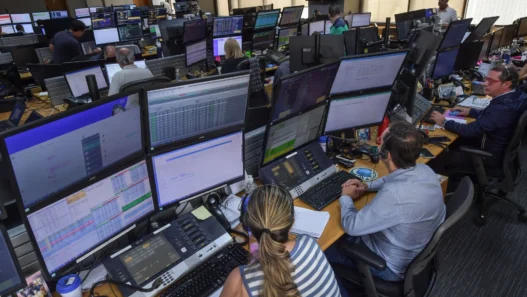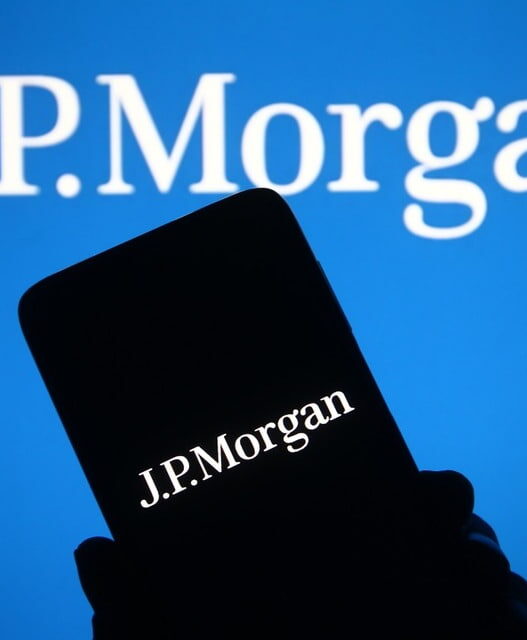Introduction: From Experimentation to Strategy
Over the past few years, blockchain has moved—or is moving—from the fringes of finance into the core discussions at big banks. At the center of this shift is Citigroup, which increasingly treats blockchain and stablecoin innovation not as curiosities, but as strategic imperatives. Citi’s leadership argues that the technology isn’t just hype—it’s a set of tools that can remake how capital moves, how assets are represented, and how financial infrastructure works.
Citi sees the digital asset and blockchain moment as one of inflection: emerging regulatory clarity, growing institutional demand, and the technical improvements that make real-world use cases viable. Their recent forecasts and pilot projects suggest they believe blockchain and its related tools are not just experiments but foundational building blocks for the next decade of Wall Street.
Key Reasons Citi Believes Blockchain Is Permanent
Here are the main pillars of Citi’s conviction that blockchain/Distributed Ledger Technology (DLT) is quite literally here to stay:
- Stablecoin Momentum & Financial Infrastructure
- Citi expects stablecoins to grow significantly. Their forecasts for 2030 see the stablecoin market cap having base-case and bull-case scenarios in the trillions of dollars. These forecasts have been revised upward with recent acceleration in use and demand.
- In the U.S., regulatory moves—such as laws that require stablecoin issuers to hold safe assets (like U.S. Treasuries or cash) backing their coins—are creating opportunities for traditional banks to play in stablecoin issuance, payments, custody, and conversion between stablecoins and fiat.
- Tokenization of Assets & Private Funds
- Citi has already run successful proofs of concept around tokenizing private equity funds. That means transforming traditionally illiquid or slowly-settling assets into digital tokens on a blockchain, which can make issuance, custody, and transfers more efficient and more compatible with digital rails.
- Tokenized deposits—essentially deposit accounts represented as digital tokens—and other real-time, blockchain-based settlement capabilities are being explored to allow “always-on” transaction capabilities.
- Efficiency Gains, Cost Reductions & Transparency
- Blockchain offers features like near-instant settlement, less dependency on intermediaries, immutable ledgers (so fewer disputes or reconciliation mismatches), and better transparency in tracking asset ownership and movement. These are especially useful in cross-border payments, trade finance, and treasury operations.
- Given the high costs, delays, and fragmentation in many parts of the global payments and asset servicing systems, the ability to streamline and automate—smart contracts, digital identity, immutable records—matters more than ever. Citi sees blockchain tools helping fill that gap.
- Regulatory Tailwinds
- Long seen as one of the biggest obstacles to blockchain adoption, regulation is starting to catch up. Citi notes that laws and rules are evolving in ways that allow banks to participate more easily in stablecoin, digital asset custody, and tokenization. This includes requirements for backing stablecoins with high-quality assets, clearer definitions, and safer frameworks.
- Also, regulatory clarity reduces risk for institutions. If banks know what is allowed or required (custody rules, legal obligations, compliance, KYC/AML, etc.), then the uncertainty that has stymied many blockchain pilots burns off. Citi seems to think that those windows of pilot / proof-of-concept work are being validated by recent regulatory reforms.
- Client Demand & Competitive Pressure
- Institutional clients—corporates, asset managers, treasury departments—are increasingly asking for digital asset services: better ways to move money cross-border quickly, reduce settlement risk, manage liquidity, tokenize their holdings or funds, etc. This demand exerts pressure on banks to offer these services or risk falling behind.
- Citi is also investing via its venture capital arm in stablecoin infrastructure firms, signaling that it wants a stake in the emerging ecosystem and to help shape it.
- Forecasts & Scale Potential
- According to internal Citi projections, stablecoins and tokenized assets could become enormously large markets by 2030. Even under more conservative scenarios, the expected growth in digital assets underpinning finance (or at least certain segments) is large enough to incentivize investing now.
- Blockchain-based tokenization of securities and real-world assets could unlock trillions of dollars in value. This is seen by Citi and others as a “killer use case” that finally gives blockchain massive real economic impact, beyond speculative or novelty use cases.
Where Citi Sees the Use Cases Already Taking Hold
While the vision is large, Citi’s current activities show where they believe the payoff is near or immediately possible:
- Tokenization of private equity funds and other alternative assets (making them easier to issue, transfer, and manage via digital tokens) in regulated environments.
- Tokenized deposits and “digital tokens” for client deposits, to enable instant transfers, programmable money features, and frictionless settlement.
- Stablecoin payment rails: exploring payment services built around stablecoins, to speed up cross-border flows, reduce cost, and improve settlement times.
- Custody services for digital assets: helping clients securely store, administer, and convert between tokens/fiat or tokenized assets, while satisfying regulation and risk controls.
Challenges, Risks, and What Can Go Wrong
Citi isn’t blind to the obstacles. Their analyses and public comments acknowledge several risk areas:
- Regulatory uncertainty still looms large in many jurisdictions. Even where regulation is improving, compliance burdens, legal risk, and supervision remain complex.
- Operational risk & security: digital asset custody, smart contract flaws, blockchain network vulnerabilities, cyber risks – all must be managed at institutional grade.
- Interoperability and standards: Many blockchain systems are siloed; tokenization platforms may not all work together, which could fragment rather than unify markets.
- Counterparty and legal risk: ownership rights, token vs. real-world asset matching, legal enforceability, dispute resolution remain tricky.
- Adoption lags & user trust: While many pilots are underway, many clients and counterparties are still unfamiliar or cautious. Scaling from proof of concept to production, especially given conservative norms in financial services, takes time.
- Technology maturity and cost: blockchain implementations at scale—secure, auditable, low latency—require investment. Some existing systems are still not optimal for high‐volume, low‐latency institutional usage.
Strategic Implications for Wall Street
If Citi’s predictions hold, several implications for the wider financial industry emerge:
- Wall Street infrastructure must evolve: Settlement systems, asset servicing, custody, communication between banks need upgrades to handle 24/7 digital/real-time demands.
- New competition: Fintechs, crypto firms, stablecoin issuers, and blockchain infrastructure providers will increasingly compete with old-guard institutions for non-interest revenue, payments, custody, etc.
- Redefinition of “money” and “liquidity”: With stablecoins, tokenized deposits, CBDCs (central bank digital currencies), etc., the lines between traditional money, bank deposits, and digital tokens might blur, possibly altering what counts as core liquidity for firms and regulatory regimes.
- Governance, risk, and legal standards gain prominence: Given the risks above, institutions that lead will need strong internal controls, legal frameworks, and risk teams tuned to digital asset issues.
- Potential to reshape cross-border payments, trade finance, and emerging markets: Blockchain can reduce frictions in payments across borders, in supply chain finance, in trade finance documentation, which could boost efficiency in regions where those frictions are greatest.
Why “Here to Stay” Seems a Reasonable Bet
Putting together Citi’s actions, forecasts, and strategic posture, the following make their belief plausible:
- The convergence of technological readiness, regulatory opening (or at least clearer rules), and market demand (institutional plus corporate) is creating conditions that weren’t present even a few years ago.
- Some use cases (tokenized funds, stablecoin payments, custody) have moved past the concept stage and are in testing or early production.
- Once foundational infrastructure (settlement, custody, tokenization standards) is in place, network effects begin to kick in: more users, more liquidity, more certainty => making the investment more durable.
- The potential upside (unlocking trillions in value, cost savings, faster settlement, reduced risk) is very large, meaning the investment isn’t just speculative but has a clear business case.
Conclusion
Citi’s belief that blockchain is “here to stay” on Wall Street isn’t mere optimism—it reflects a strategic alignment of market needs, regulatory trends, technological maturity, and internal investment. While many challenges remain, the bank appears convinced that the future of finance will be digitally native, with tokens, programmable money, real-time settlement, and stablecoins playing central roles.
For those watching Wall Street’s evolution, the question is less if blockchain will matter—more which players will lead in building the rails, defining standards, and delivering trusted, secure services at scale. Citi seems determined to be among those leaders.






















